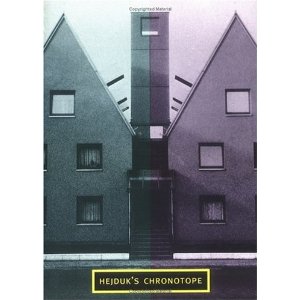Hejduk's Chronotope
 What explains the contradiction that the body of work many contemporary architectural theorists find most illustrative of concepts they would promote narrative and representation after formalism, minor practice, nomadology, the carnivalesque, the swerve or détournment (the list goes on) has as its author an architect who regards contemporary theory with contempt, when he regards it at all? What warrants a collection of ruminations on theoretical practice whose focus is an architecture neither theoretical nor practical in any conventional sense of the terms?
What explains the contradiction that the body of work many contemporary architectural theorists find most illustrative of concepts they would promote narrative and representation after formalism, minor practice, nomadology, the carnivalesque, the swerve or détournment (the list goes on) has as its author an architect who regards contemporary theory with contempt, when he regards it at all? What warrants a collection of ruminations on theoretical practice whose focus is an architecture neither theoretical nor practical in any conventional sense of the terms?
When, late in 1990, Jeffrey Kipnis and Michael Hays proposed a working session and debate at the Canadian Centre for Architecture involving a handful of architectural theorists in an effort to focus what were increasingly divergent theoretical trajectories being spun off at ever greater distances from the practical concerns of professional designers, there was no trouble in agreeing that the primary test case of theoretical practices meeting a theoretical practice should be John Hejduk. Hejduk’s pedagogy, his personal convictions, as well as his multi-modal architectural production, all seem to be founded on a sympathetic, if not entirely similar, refusal of disciplinary boundaries and unchanging definitions. What is more, pre-poststructuralist theory had not been able to theorize Hejduk’s work at all, let alone its possible implications for a generalizable architectural practice. Architecture theory in its more recent iterations, it was thought, should set for itself just that goal.
Hejduks Chronotope is a collection of essays by some of todays leading theorists and historians, who display a variety of interpretive approaches to the work of Hejduk.
Contributors include K. Michael Hays, Detlef Mertins, Edward Mitchell, Peggy Deamer, Stan Allen, R. E. Somol, Catherine Ingraham.
Princeton Architectural Press